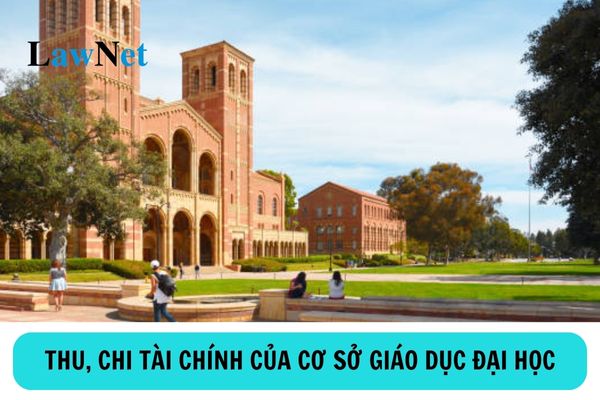How much are fines for higher education institutions violating financial revenue and expenditure regulations in Vietnam?
How much are fines for higher education institutions violating financial revenue and expenditure regulations in Vietnam?
Based on Article 32 of Decree 04/2021/ND-CP, the regulations on violations regarding the financial revenues and expenditures of education institutions are as follows:
Violations of regulations on financial revenues and expenditures of education institutions
- Violations of regulations on expenditures not conformable to the amounts controlled by the State Treasury shall be handled according to the Government's decree on administrative penalties in the management and use of public properties; practicing thrift, combating wastefulness; national reserves; State Treasury.
- A fine ranging from 10,000,000 VND to 20,000,000 VND shall be imposed for any of the following acts:
a) Collecting unconformable amounts without the approval of competent authorities;
b) Spending unconformable amounts without the approval of competent authorities on expenditures not part of the state budget.
- Additional penalties: Confiscation of the amounts collected from the act of violation to be accounted for in the state budget if it is impossible to rectify the consequence by refunding the collected money.
- Remedies:
a) Forced refund of the collected money and bearing all costs of the refund organization for the act of violation specified in point a, clause 2 of this Article;
b) Forced submission to the state budget of the wrongfully spent amounts for the act of violation specified in point b, clause 2 of this Article.
In point b, clause 3, Article 3 of Decree 04/2021/ND-CP, the fine levels are defined as follows:
Forms of penalties and fine levels in the education sector
...
3. Fine levels in the education sector:
...
b) The fine levels stipulated in Chapter II of this Decree are applied to administrative violations committed by organizations, except for the provisions in clause 5 of Article 9, clause 2 of Article 11, clause 1 and points a, b, c, d, e of clause 3 of Article 14, point b of clause 3 of Article 21, clause 1 of Article 23, clause 1 of Article 29 of this Decree, which define the fine levels for administrative violations committed by individuals. For the same administrative violation, the fine for individuals shall be half of the fine for organizations.
...
Therefore, higher education institutions violating financial revenue and expenditure regulations are penalized as follows:
- In the case of violation of regulations on unconformable expenditures controlled by the State Treasury, penalties will be executed according to Decree 63/2019/ND-CP.
- In cases of collecting amounts without the approval of competent authorities; spending unconformable amounts on non-state budget expenditures: A fine ranging from 10,000,000 VND to 20,000,000 VND.
- Additional penalties: Confiscation of the amounts collected due to the violation to be accounted for in the state budget if it is impossible to rectify the consequence by refunding the collected money.
- Remedies:
+ Forced refund of the collected money and bearing all costs of the refund organization for the act of collecting amounts without the approval of competent authorities;
+ Forced submission to the state budget of the wrongfully spent amounts for the act of spending unconformable amounts on non-state budget expenditures.

How much are the fines for higher education institutions violating financial revenue and expenditure regulations in Vietnam? (Image from Internet)
What financial revenue and expenditure information must higher education institutions in Vietnam disclose?
Based on Article 5 of Circular 09/2024/TT-BGDDT, higher education institutions must disclose the following financial revenue and expenditure information:
- Financial status of the higher education institution for the previous fiscal year, as per legal regulations, including the structure of revenues and expenditures for activities as follows:
+ Revenues classified by: Sources of funds (state budget, investor support; tuition fees, fees and other collections from learners; sponsorship funds and contracts with external parties; other revenue sources) and type of activity (education and training; science and technology; other activities);
+ Expenditures classified by: Wage and income expenses (salaries, allowances, additional wages and other expenses equivalent to teachers, lecturers, management officials, staff, etc.); physical facility and service expenses (procurement, maintenance, repair, operation of physical facilities, equipment, rental services directly supporting education, training, research, staff development, etc.); learner support expenses (scholarships, allowances, living support, activity movements, commendations, rewards, etc.); other expenses.
- Revenues and fees for learners, including tuition fees, fees, all collections and fees beyond tuition fees, fees (if any) for the academic year and projected for each year of enrollment or school year of the higher education institution before admissions.
- Policies and annual results in implementing policies on allowances, exemptions, reductions in tuition fees, and scholarships for learners.
- Balances of funds as per regulations, including special-purpose funds (if any).
- Other financial disclosures according to laws on finance, budget, accounting, auditing, grassroots democracy.
What are the sources of finance for higher education institutions in Vietnam?
According to Article 64 of the Law on Higher Education 2012, amended by clause 32, Article 1 of the Law on amendments to the Law on Higher Education 2018, the financial sources for higher education institutions include:
- Revenues from the higher education institution, including:
+ Tuition fees and amounts from training, science and technology activities, other service revenues supporting training activities;
+ Revenues from training and research placement orders from the state, organizations, and individuals; execution of state-assigned tasks;
+ Investments from domestic and international organizations and individuals; additional finance from annual activity outcomes of the higher education institution;
+ Revenues from business activities, community services, financial investments (if any), and other lawful sources;
+ Loan capital.
- Sponsorships, aids, gifts, donations from alumni, domestic and international organizations, and individuals.
- State budget allocations (if any).

